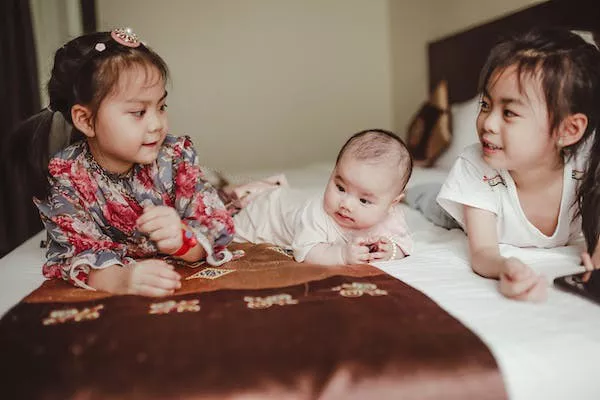When it comes to the fascinating world of newborns, their developmental milestones never fail to intrigue parents and caregivers alike. One of the most common questions that often arises is, “At what age do newborns see color?” The ability of newborns to perceive the vibrant hues around them is a topic that has captivated researchers and parents for generations. In this article, we will delve into the intricacies of newborn color vision, shedding light on the age at which this magical transition occurs.
The Early Days of Vision (Birth to 3 Months):
During the initial months of their lives, newborns possess a vision that is in its embryonic stage. At birth, their visual system is still undergoing critical development, and their perception of color is limited. During this period, babies primarily perceive the world in shades of gray and have a preference for high-contrast patterns. While they might not fully grasp the spectrum of colors, they can still distinguish between light and dark contrasts, which helps them navigate their surroundings and respond to visual stimuli.
Emergence of Color Discrimination (3 to 4 Months):
As the first few months pass, a significant transformation takes place in a newborn’s visual capabilities. Around the age of 3 to 4 months, you may notice your little one’s fascination with bright and vivid objects. This is a sign that their color perception is developing. During this stage, babies start to differentiate between primary colors like red, blue, and green. While their ability to perceive subtle variations in color might still be limited, their growing interest in colorful toys and objects signifies a pivotal milestone in their visual journey.
Exploring a Colorful World (5 to 6 Months):
Around the 5 to 6-month mark, newborns embark on a captivating journey of exploring the world of colors. Their ability to perceive a wider range of hues becomes more evident. This period is marked by an increased sensitivity to different shades and intensities of colors. Babies start to display preferences for specific colors, showing a distinct liking for certain shades over others. This newfound ability to distinguish and appreciate various colors adds a new layer of wonder to their sensory experiences.
Refinement of Color Perception (7 to 9 Months):
As babies continue to grow and learn, their color vision undergoes further refinement. During the 7 to 9-month phase, their ability to perceive subtleties in color variations becomes more advanced. They can differentiate between even more nuanced shades and demonstrate a greater awareness of the colorful world around them. This is an exciting time for parents and caregivers to introduce a diverse array of colorful objects and activities that can stimulate their visual development.
Full-Spectrum Color Vision (10 Months and Beyond):
By the time a newborn reaches their 10th month, their color vision has developed significantly, approaching that of an adult’s. While they may still be refining their ability to perceive the most intricate color differentiations, they are now capable of appreciating a wide spectrum of hues. This marks a remarkable achievement in their visual growth, highlighting the incredible journey from grayscale infancy to the vibrant world of colors.
In conclusion, the age at which newborns can see color is a process that unfolds gradually over their first year of life. From the early days of differentiating light from dark to the full-spectrum color vision they develop by their 10th month, each stage is a testament to the wonders of human visual development. As parents and caregivers, it’s important to nurture this growth by providing a colorful and stimulating environment that supports their exploration of the colorful world that awaits them.


